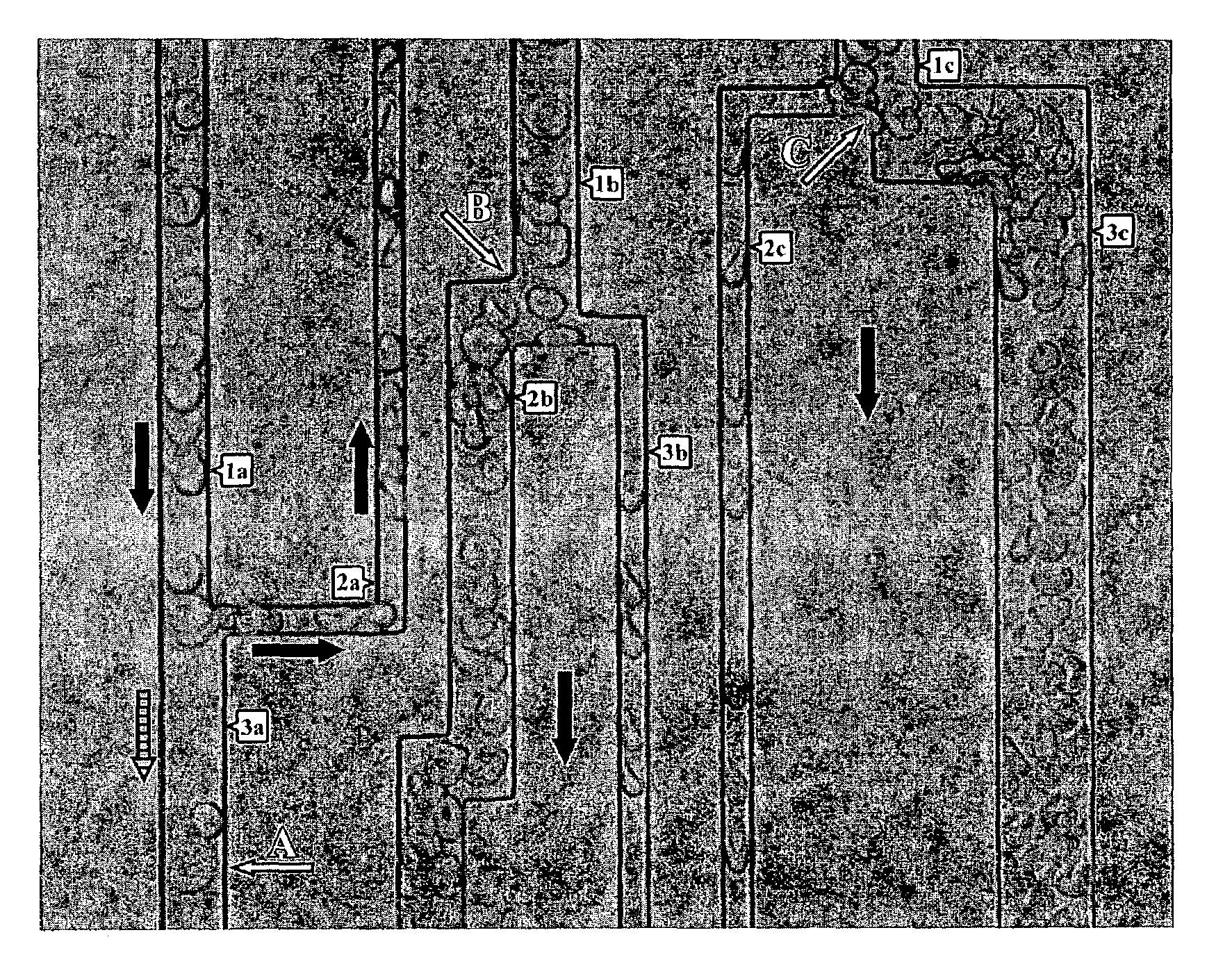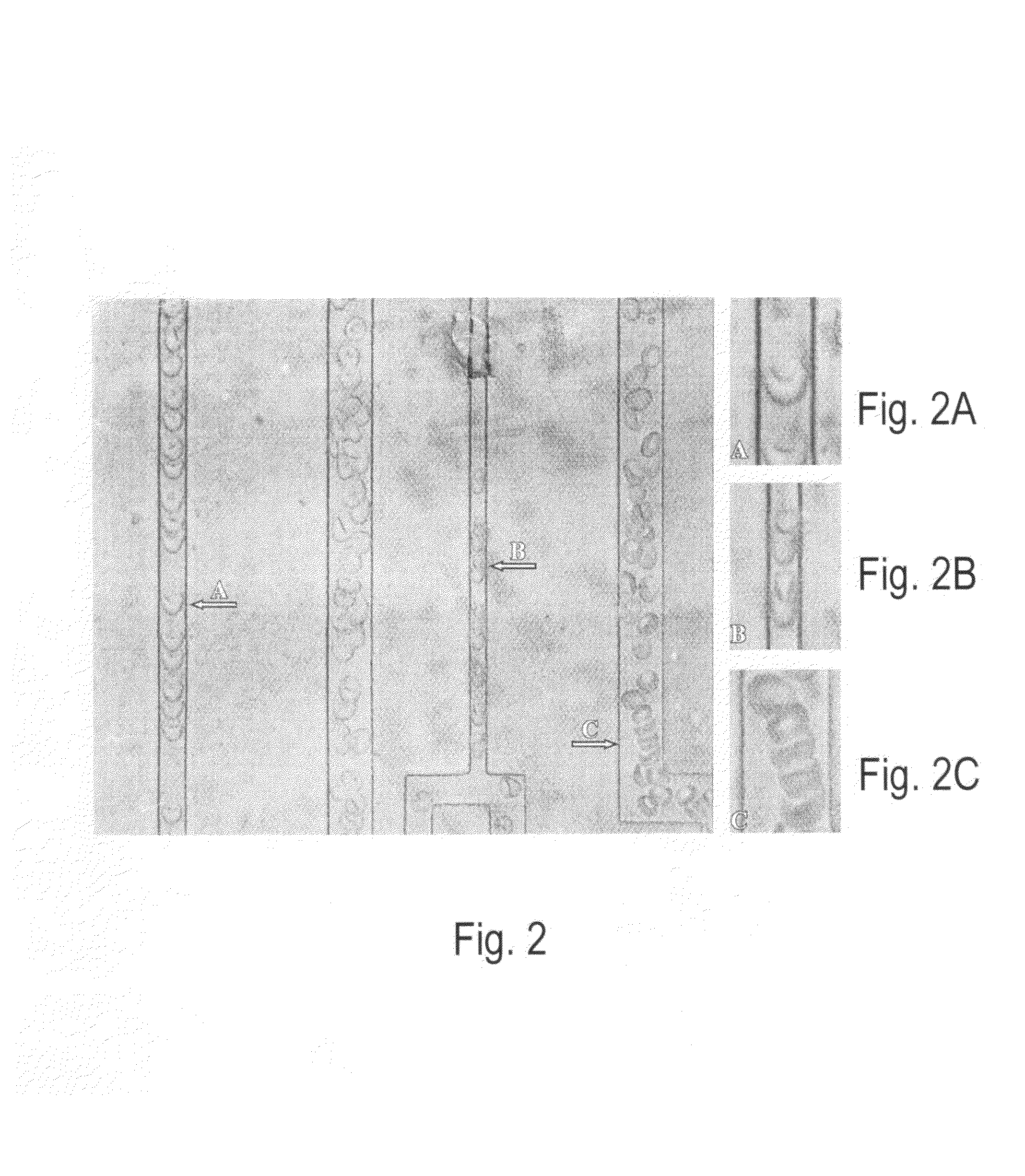Microvascular network device
- Summary
- Abstract
- Description
- Claims
- Application Information
AI Technical Summary
Benefits of technology
Problems solved by technology
Method used
Image
Examples
Embodiment Construction
[0024]Mold fabrication. The network 2D pattern was drawn with L-Edit (Tanner FDA, Tanner Research, Inc.) and converted into a machine specific format using CATS (Transcription Enterprises). The silicon wafer (4″, 475-575 μm, 1-20-cm, ; Silicon Quest International) was cleaned in oxygen plasma (1 min, 1000 W; Branson / IPC P2000 Barrel Etcher), dehydrated on a hot plate (5 min, 170° C.), spin-coated with positive resist (XP 9947) and baked (3 min, I 35° C.). Direct e-beam writing was used to transfer the pattern onto the wafer (EBMF-10.5 / CS, Cambridge Instruments). After post-exposure baking (90 sec, 135° C.) and developing (1 min, 300 MOF), the wafer was cleansed in oxygen plasma (30 sec, 100 W). The pattern was etched using the Bosch fluorine process (Unaxis SLR 770 ICP Deep Silicon Etcher) and residual resist was stripped to bare silicon with oxygen plasma (10 min, 1000 W; Branson / IPC P2000 Barrel Etcher). The silicon wafer was subsequently used as a negative mold.
[0025]Casting. Cas...
PUM
| Property | Measurement | Unit |
|---|---|---|
| Diameter | aaaaa | aaaaa |
| Diameter | aaaaa | aaaaa |
| Width | aaaaa | aaaaa |
Abstract
Description
Claims
Application Information
 Login to View More
Login to View More - R&D
- Intellectual Property
- Life Sciences
- Materials
- Tech Scout
- Unparalleled Data Quality
- Higher Quality Content
- 60% Fewer Hallucinations
Browse by: Latest US Patents, China's latest patents, Technical Efficacy Thesaurus, Application Domain, Technology Topic, Popular Technical Reports.
© 2025 PatSnap. All rights reserved.Legal|Privacy policy|Modern Slavery Act Transparency Statement|Sitemap|About US| Contact US: help@patsnap.com



